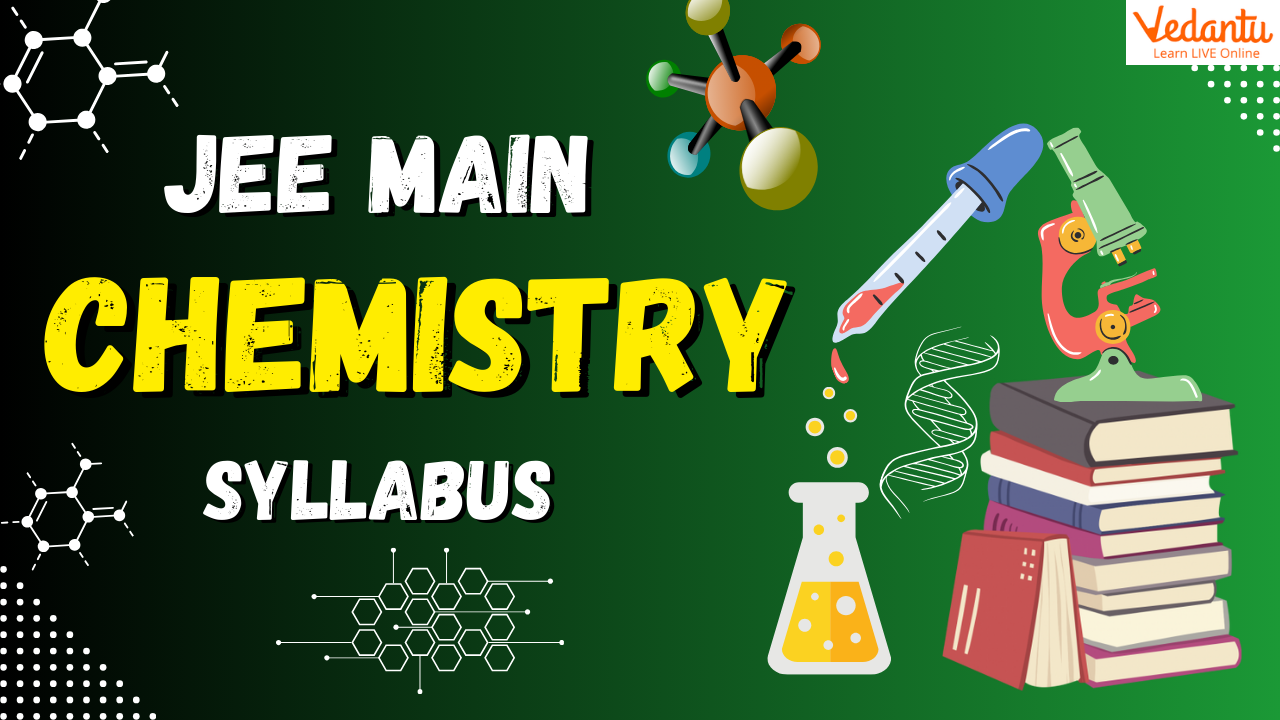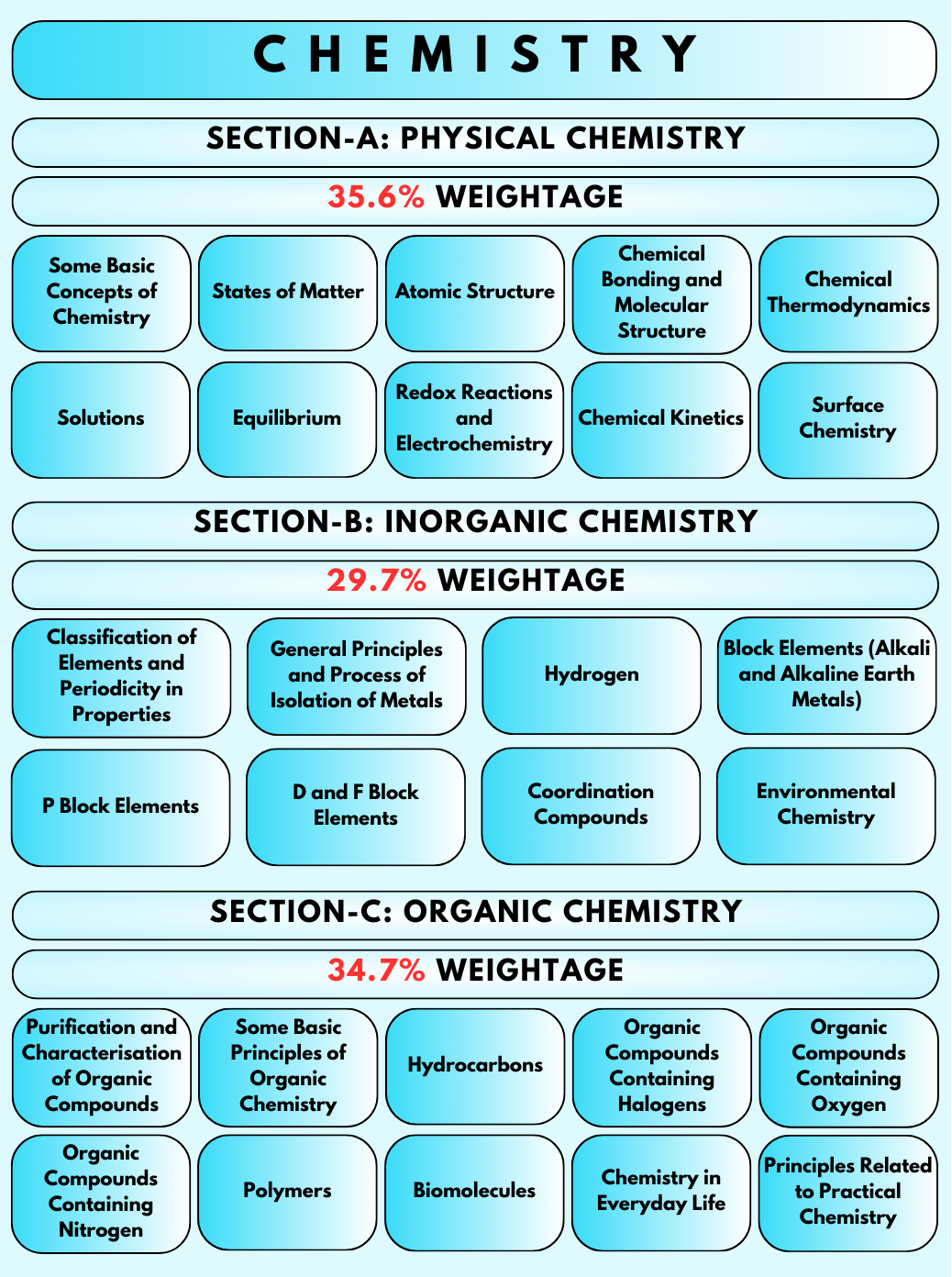JEE Main Updated Chemistry Syllabus 2025: Download The Topic-wise PDF with Weightage












FAQs on JEE Main Chemistry Syllabus 2025 (Released)
1. What is the JEE Main Chemistry Syllabus for 2025?
The JEE Main Chemistry Syllabus for 2025 covers a broad range of topics in physical, inorganic, and organic chemistry. The syllabus is designed to assess the candidate's understanding of fundamental concepts and their ability to apply them to solve problems.
2. Where can I download the JEE Main 2025 Chemistry Syllabus PDF?
You can download the JEE Main 2025 Chemistry Syllabus PDF from the official website of the conducting authority. We provide a direct link to the PDF on Vedantu’s page for your convenience.
3. Why is it important to know the weightage of topics in the JEE Main Chemistry syllabus?
Knowing the weightage of topics in the JEE Main Chemistry syllabus helps you prioritize your study time and focus on the most important areas. This can significantly improve your chances of scoring well in the exam.
4. Can I find the JEE Main 2025 Chemistry Syllabus on this page as well?
The JEE Main Chemistry Syllabus is subject to change from year to year. The syllabus for the 2025 exam is no longer relevant for the 2025 exam. So, Vedantu provides access to the JEE Main 2025 Maths Syllabus. It can be helpful for reference and comparison.
5. How do I prepare effectively using the JEE Main Chemistry Syllabus?
Here are some tips for preparing effectively using the JEE Main Chemistry Syllabus:
Create a study plan: Break down the syllabus into manageable chunks and create a study plan that you can follow consistently.
Focus on Understanding the Concepts: Don't just memorize facts and formulas. Try to understand the underlying concepts so that you can apply them to solve problems.
Practice Solving Problems: Regular practice is essential for improving your problem-solving skills. There are many practice problems available online and in textbooks.
Take Mock Tests: Mock tests help you assess your preparation and identify areas where you need to focus more.
6. Is the JEE Main Chemistry Syllabus subject to change?
Yes, the JEE Main Chemistry Syllabus is subject to change from year to year. The National Testing Agency (NTA) is responsible for updating the syllabus, and they released the new syllabus of the year JEE Main 2025.
7. Can I request updates or notifications about changes to the JEE Main Chemistry Syllabus?
You can subscribe to our Vedantu website for updates and notifications about any changes in the JEE Main Chemistry Syllabus or other related information.
Or
You can request updates or notifications about changes to the JEE Main Chemistry Syllabus by subscribing to the NTA's email list.
8. Is there any specific exam strategy based on the syllabus for JEE Main Chemistry?
Here are some tips for developing a specific exam strategy based on the syllabus for JEE Main Chemistry:
Manage your time effectively: The JEE Main exam is time-constrained, so it is important to manage your time effectively. Practice solving problems under timed conditions to improve your time management skills.
Answer easy questions first: Don't get bogged down on difficult questions. Answer the easy questions first to maximize your score.
Mark difficult questions: If you find a question too difficult, mark it and move on. You can come back to it later if you have time.
Use diagrams and graphs: Diagrams and graphs can help you visualize concepts and solve problems more easily.
Check your work: Before you submit your answer sheet, take a few minutes to check your work for careless mistakes.





